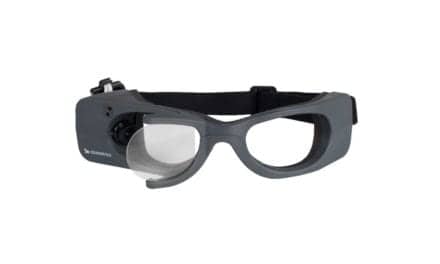Letters | February 2016, Hearing Review
Killion and Berger Comment on “UNT Develops New Approach for Assessing Musicians Earplugs”
Dear Editor:
In their most recent paper, Kris Chesky and Amyn M. Amlani (January 2016 Hearing Review)1 agreed with the analysis of Killion and Haapapuro (November 2015 Hearing Review)2 with regard to custom Musicians Earplugs. They stated: “Our research found that the custom-fitted MEPs provided the advertised attenuation.” The method of measurement of ER-20® Hi-FI earplugs (ETYPlugs®) used in Etymotic’s Adopt-a-Band program, however, needs to be resolved.
Part of the basis for Chesky and Amlani’s criticism of the attenuation of the ER-20 earplug is the appearance of their Figure 2C graph, which was plotted to a scale factor of 5.5 dB per frequency decade instead of the standard 50 dB per decade, giving a 9X expansion of the vertical scale. Further, their repeated measurement of 0-dB attenuation at 125 Hz on the KEMAR® manikin must have a rational explanation. The 3300 cgs acoustical ohm damper used in the ER-20 earplug, combined with the 1.4-cc equivalent volume of the Zwislocki coupler in KEMAR, gives a theoretical attenuation of 8.9 dB at 125 Hz. The published data for KEMAR measurements is 9 dB. Unless that damper was damaged or removed, a leak in the seal to KEMAR’s ear would be the next most likely explanation for a 0-dB measurement. Less likely would be a 120-Hz harmonic of a 60 Hz hum. Correcting the measurement problem with the ER-20 earplugs should bring the data of Chesky and Amlani into reasonable agreement with our own data, and with attenuation reports from three independent laboratories in the United States (EARCAL, Michael and Associates, and Auditory Systems Laboratory), and two laboratories in Europe (TNO and SATRA). At 125 Hz, TNO and SATRA reported 12.2 dB and 9.6 dB attenuation, respectively.
— Mead Killion, President, Etymotic Research
References
-
Chesky K, Amlani AM. UNT develops new approach for assessing musicians earplugs. Hearing Review. 2016;23(1):30. Available at: https://hearingreview.com/2015/12/unt-develops-new-approach-assessing-musicians-earplugs
-
Killion MC, Haapapuro AJ. High-fidelity earplug attenuation measurements agree after all. Hearing Review. 2015;22(11):28. Available at: https://hearingreview.com/2015/10/high-fidelity-earplug-attenuation-measurements-agree
Dear Editor:
Kris Chesky and Amyn M. Amlani published a counterpoint article in the January 2016 edition of The Hearing Review. The article contains a number of statements that would benefit from examination. Specifically, I comment on four items below.
1) Chesky and Amlani say that REAT measurements below 500 Hz are unreliable and cite my tutorial1 in the Acoustical Society of America as a reference. My paper does not make that statement. In the conclusion, I do say on p 1681 that “The errors are limited to frequencies at or below 500 Hz and are typically only a few dB, except at 63 Hz where they may become as large as approximately 10 dB.” The paper explains that the errors are predictable, can be explained by physiological phenomena, vary with the type of device (small errors for earplugs), and does not call the measurement unreliable. Earlier in the paper, for example, I state on p 1661 “For insert devices and medium- to large-volume earmuffs, the overestimation tended towards zero.”
2) On the first page of their paper, Chesky and Amlani say “our test results showed that [Musicians Earplugs or MEPs] do not provide ‘flat’ attenuation,” presumably referring to all types of MEPs, but on the next page they say “Our research found the custom-fitted MEPS provided the advertised attenuation.” The statements appear contradictory. My reading of their data, and my own data, suggest that the latter statement is correct.
3) The explanation of Chesky and Amlani’s low attenuation at low frequencies is most probably due to a leak in their earplug fit. Because of the design of KEMAR’s pinna and how it couples to the steel tube that is KEMAR’s ear canal, it is not possible to properly insert a 3-flanged earplug of the style used in the ER-20 for a proper seal. This is not true in real ears, but is true in KEMAR, which is a manikin that was never intended for this application.
We have replicated the Chesky and Amlani results using our own KEMAR. Specifically, testing with pink noise in a diffuse field at 95 dBA, we measured an insertion loss of only 4 dB at 125 Hz using KEMAR with his pinna in place, but measured 12 dB with the pinna removed. The pinna has, of course, no acoustical effect at 125 Hz, but does indeed make it exceedingly difficult to properly fit that type of flanged earplug. With the pinna removed, access to the ear canal is improved, and the plug can seal it properly. When we mathematically correct the 12-dB value using the known physiological noise masking effect at that frequency, we predict an estimated REAT of 15 dB, which is in fact the value that we report for the product based on labeled test values; no mystery, nothing missing, it all makes sense.
4) Chesky and Amlani observe that, in practice, misfitted pre-molded earplugs like the ER-20 can provide much less attenuation than labeled values. I would concur with that statement, and add that it applies to all types of earplugs and is one of the issues that has been discussed for years with respect to EPA label testing of noise-attenuating earplugs and earmuffs. It is the motivation for hearing protector attenuation derating schemes, and one reason for the popularity of field fit testing systems.
— Elliott H. Berger, Division Scientist, 3M
References
-
Berger EH. Methods of measuring the attenuation of hearing protection devices. J Acoust Soc Am. 1986;79:1655-1687.





